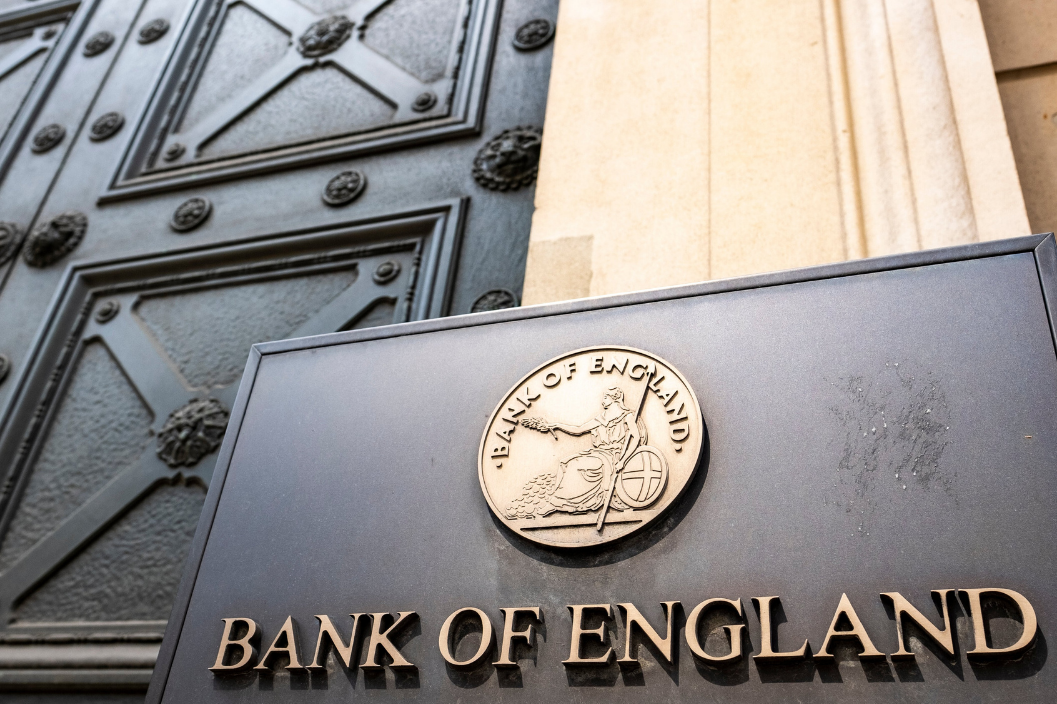The most effective inflation-proof investments in 2023
Near post-war inflation record
Goldman Sachs released a statement in August 2022, warning that the UK inflation rate could reach 22.4% in 2023, nearly matching the 1975 post-war peak of 24.5%.
Whilst this figure is only a forecast, the UK inflation rate as of July 2022 stood at 10.1%, meaning that pressure on costs and prices is certainly already visible.
Compared with the annual inflation rate of 2.6% in 2021, it is clear that this rapid rise in the general price level is now placing investor returns on traditional assets at high risk of value erosion during 2023, and possibly more so over years to come.
The impact of a high-inflationary environment on investments, particularly low-yield, low-risk, fixed-income bonds, is that the value of the investment is outpaced by inflation. This means that your capital is not appreciating as much as it ideally should in order to gain value or, at the minimum, maintain value against inflation. Ultimately, the threat of high inflation is that the purchasing power of investor portfolios can fall, even if positive year-on-year investment returns are achieved.
Effective inflation-proof investments
So, to balance out the risk of dwindling portfolio value occurring due to rising inflation, investors could look to increase the level of diversification within their investment portfolio, something that can be achieved with the help of alternative asset classes.
For example, venture capital, private equity, property and commodities have the potential to insulate against eroding investment returns, as these asset classes tend to display little correlation, if any at all, to public markets and returns.
Property
Investing into real estate can be a useful method of protecting portfolios against inflation, whether by directly purchasing a property or via more indirect routes, such as equity real estate investment trusts (REITs).
Retail property was found to be the ‘best category of real estate to beat inflation’, according to analysis by the Massachusetts Institute of Technology (MIT). When studying which type of property performed best in the long run, MIT factored in considerations such as inflation growth, maintenance costs and value appreciation.
REIT investments are essentially buying into funds that exclusively own property-based assets. These funds are obliged to pay out regular dividends, thus offering an attractive scenario to income investors. Furthermore, the strong historic performance of REITs could indicate a solid way to protect against inflation, with the MSCI U.S. REIT Index yielding an average annual return of 10% over the past decade. This investment could prove to be an effective route to protect your investment portfolio against inflation, minus the high additional costs of owning and maintaining a physical property.
Whilst retail property was suggested as being the best category to hedge against inflation, this option does often require large buy-ins and many financing and maintenance costs. This is why joint venture property (JVP) investments or real estate investment trusts (REITs) and other forms of indirect property investment can be a more suitable option for investors looking to target inflation-beating returns.
A JVP investment generally involves an arrangement between two or more parties, where capital and expertise are combined to create value from the development, acquisition or management of a project. This form of property investment enables experienced investors to work together with property developers, helping to facilitate a range of projects, generate positive regional, social and economic impacts, and subsequently benefit from portfolio diversification and high financial returns.
In turn, this offers investors a more accessible, 'hands-off' approach to property investment - not requiring the investor to purchase the property in its entirety, be accountable for construction and maintenance costs, or to be liable for any of the legal requirements that traditional buy-to-let investments incur. Against a political backdrop that regularly 'shifts the goalposts' for landlords and buy-to-let regulation, this can make JVP investments a particularly appealing route.
Venture capital
Another form of alternative investment which could help investors beat inflation is venture capital (VC). This involves financially supporting early-stage businesses, generally ones that display high growth potential.
This can be a high-risk, high-return investment opportunity for venture capitalists, with internal rates of return (IRR) from VC investments tending to range between 20% and 60%, much higher than traditional investment returns and certainly inflation-beating in the UK during 2023.
One key consideration with VC is selecting the right companies to back. With many opportunities available, it is worth looking into young enterprises that display scope to generate positive impacts, potentially in the realm of environmental, social and governance (ESG) areas, as well as strong financial returns.
Furthermore, many VC investments in the UK are eligible to benefit from tax relief opportunities, such as the Enterprise Investment Scheme (EIS) and the Seed Enterprise Investment Scheme (SEIS). This can allow investors to claim up to 64% tax relief on eligible investments and benefit from numerous incentives, including capital gains tax and inheritance tax exemptions, in turn maximising potential upside and minimising potential downside. Such schemes can ultimately make VC an attractive investment opportunity to consider, particularly when aiming to counteract inflationary pressure.
Private equity
Venture capital is a smaller strand of investment that falls into the wider category of private equity (PE). Whilst VC focuses on young businesses, PE can provide investment into private companies at any stage of the corporate life cycle.
This asset class can be identified as a useful way to assist in inflation-proofing investor portfolios, as in 2021 the private equity industry was setting record highs in terms of buy-out activity and fundraising. According to data from Preqin, the global private equity market tripled to over $6 trillion USD in the decade up to November 2021. The outlook for 2022 displayed more of the same, with predictions appearing strong.
Whilst unprecedented geopolitical and subsequent macroeconomic events have slightly skewed the initial analysis, private equity is still largely uncorrelated to inflation, meaning that potential for attractive real returns can offer investors protection against the increasingly inflationary global economy.
PE does provide scope for attractive returns, but it is highly important that the right businesses are invested into.
Listed equities
Despite recent stock market turbulence, historical data suggests that investing into listed equities could be the most reliable way to grow savings over long time periods. For example, the average annual return for the FTSE 100 reached 7.3% over the past 30 years (assuming dividends are reinvested). This outperforms the 2.1% average annual growth in inflation for the same period, as highlighted by the wealth manager New World Financial Group.
When aiming for inflation-beating returns, selecting certain stocks can be important. For example, infrastructure companies and commodity-focused companies tend to perform well during inflationary time periods. This can partially be attributed to the inelastic nature of demand for the products the firms offer, meaning that rising costs of production can be passed on to consumers via higher prices.
As displayed by Bloomberg, returns from the USGG 10-year index consistently outperformed the year-on-year CPI. Whilst there is evidence of strong historical performance, it appears that inflation is now on the rise whilst listed equity returns are on a downward trend.
This reiterates the importance of portfolio diversification, aiming to balance traditional asset classes, such as equities and bonds, with alternative investments. A diverse portfolio can not only help to reduce volatility, but also help to beat inflation, as many alternatives offer superior returns which are uncorrelated to the general price level.
EIS and SEIS investments
Making use of tax-efficient wrappers is one effective method of maximising returns and minimising risk, a key investor objective not only in general but particularly during times of inflationary pressure, when the value of investments can become quickly eroded. The Enterprise Investment Scheme (EIS) and Seed Enterprise Investment Scheme (SEIS) are prime examples of these.
Firstly, the Enterprise Investment Scheme was introduced by the UK Government in 1994, with the primary aim of incentivising investors to support early-stage businesses, in part via a generous range of investor tax reliefs
Currently, five main forms of EIS tax relief are available for investors who subscribe qualifying shares in qualifying companies. These include income tax relief, capital gains tax (CGT) exemption, CGT deferral on other assets, inheritance tax relief and risk minimisation with loss relief.
Since being introduced, the EIS has raised above £25 billion of private investment for over 36,000 small and medium-sized enterprises (SMEs) and contributed to a growing list of success stories, from property comparison platform Zoopla to personal finance app Money Dashboard.
Secondly, the Seed Enterprise Investment Scheme (SEIS) is a slightly more modern relation to the EIS. Introduced in Chancellor George Osbourne’s 2011 Autumn Statement, this scheme has a similar aim to the EIS, but with more of a focus on earlier stage businesses, often just at the idea stage.
The main benefits of the SEIS involve investors being able to claim up to 50% income tax relief on a maximum of £100,000 a year (should shares be held for at least three years), alongside inheritance tax exemption and CGT exemption and reinvestment relief.
The world-leading SEIS has raised more than £1.5 billion for over 15,000 innovative UK start-ups since its introduction. As well as providing sought-after finance for game-changing young companies, many early-stage investors have been rewarded with superior returns.
Combining the schemes’ inherently high target growth, risk-minimising tax reliefs and lack of correlation to market fluctuations, the case for investing into EIS and SEIS-eligible investments to generate inflation-beating returns is a robust one.
Importance of diversification
Highlighted by Interactive Investor, a UK subscription-based investment platform, alternative investments such as residential property, UK equities and gold were assets that beat inflation between March 2021 and March 2022.
It was also heavily emphasised by this platform that it is impossible to predict whether all, or in fact any, of these investments will continue to perform well. Therefore, many financial advisers will recommend that investors construct a diverse portfolio, containing a variety of asset classes. These are often made up of a combination of equities, property, bonds, and other alternative investments.
Following this strategy, investors will not be overexposed to individual asset classes, in turn meaning that any concerns with particular assets, firms, geographies or sectors can be balanced out with differing performances and returns from the range of other investments that are held.
Regardless of the asset classes an investor centres their portfolio around to target inflation-beating returns, employing a mindfully diversified portfolio of alternative investments can be an effective strategy for any investor, especially against an increasingly uncertain backdrop of a rising CPI and steadily increasing interest rates.
%20(3)%20(2).jpg)












